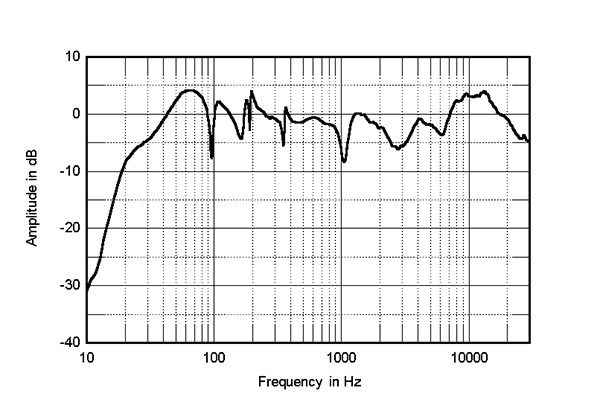Not all dips are created equal even if they look similar. How the dip was caused makes a significant difference.
Comb filter effects tend to be considerably more benign than the dip in an anechoic or quasi-anechoic curve implies. This is because the energy is actually still there, and arrives after a reflection or two, and tends to perceptually fill in the dip. The ear/brain system does not process sound the same way that microphones do.
The floor bounce dip is a comb filter effect that looks dreadful on paper but is relatively benign because it is filled in by the subsequent room reflections. If you want to compare what the floor bounce dip sounds like with and without reflections, have someone talk to you from a few feet away indoors. Pay attention to the timbre of their voice. Then walk outdoors and have that person talk to you again from about the same distance, again paying attention to the timbre of their voice. The direct sound is the exact same; the reflections are what’s different. Without reflections filling in the floor-bounce dip, their voice sounds much thinner.
Another virtually ubiquitous comb filter effect is the 2 kHz stereo dip. At about 2 kHz the signal from the left speaker arrives at the right ear delayed by 1/2 wavelength (because of the path-length difference), and a comb-filter cancellation dip results. Likewise at the left ear the same thing happens. In approximately anechoic conditions (including near-field listening) this dip can be audible, and mixing engineers actually use this dip in their well-damped mixing rooms to find exactly where their ears should be when using nearfield monitors. But in a normal listening set-up, this comb filter effect is filled in by the in-room reflections and is not noticeable.
On the other hand, a dip that is due to reduced output from a driver is far more likely to be audible and objectionable because it shows up in the direct sound and in the reflections.
Microphone height can make a great deal of difference in the on-axis frequency response measurement depending on how directional the drivers are in the vertical plane and how their outputs are combining at the microphone location. In practice there is often considerably less change in timbre at the listening position than one might expect from the differing curves taken at different microphone heights because the in-room contribution of the reflections tends to average things out.
Don’t get me wrong, I am very much pro-measurements! The first 90 percent or so of my work on a design is purely measurement-based. But sometimes measurements taken at face value can be misleading; ime the actual cause of frequency response anomalies needs to be understood and taken into account. It takes a LOT of measurements to tell enough of the story to get a reliable picture of what’s going on, and even then the characteristics of the human hearing system can result in perception not precisely matching up with expectations.
Duke


